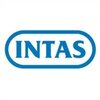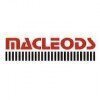
Cipla
Proud winner of ABECA 2025 - AmbitionBox Employee Choice Awards
Filter interviews by
Cipla Interview Questions and Answers for Freshers
40 Interview questions
Indemnity compensates for losses, while damages are monetary awards for harm caused by a breach of duty.
Indemnity is a contractual obligation to compensate for losses or damages incurred by another party.
Example: An insurance policy provides indemnity for damages caused by a car accident.
Damages refer to a monetary award granted by a court to a party for loss or injury.
Example: A plaintiff may receive damages for ...
Distillation rate can be calculated by dividing the amount of distillate collected by the time taken to collect it.
Calculate the amount of distillate collected in a given time period.
Divide the amount of distillate by the time taken to collect it to get the distillation rate.
Express the distillation rate in units such as liters per hour or gallons per minute.
Tip speed is the speed at the outer edge of a rotating object, calculated by multiplying the radius by the angular velocity.
Tip speed is the speed at the outer edge of a rotating object.
It is calculated by multiplying the radius of the object by the angular velocity.
In the laboratory, tip speed can be calculated using the formula: Tip Speed = 2 * π * Radius * RPM.
In the pilot plant, the same formula can be used to...
Calculations include scale-up factors, equipment sizing, material compatibility, process optimization, and cost analysis.
Determine scale-up factors to ensure the lab process can be replicated in the plant
Size equipment appropriately for the larger scale production
Check material compatibility with plant equipment and process conditions
Optimize the process parameters for efficiency and quality
Conduct cost analysis t...
Heat transfer is the movement of heat from one place to another, while mass transfer is the movement of mass from one place to another. Both are important in various engineering processes.
Heat transfer involves conduction, convection, and radiation.
Mass transfer involves diffusion, convection, and molecular diffusion.
Significance of heat transfer includes maintaining temperature in chemical reactors, HVAC systems,...
I have taken various actions in troubleshooting, including analyzing data, conducting experiments, and collaborating with team members.
Analyze data to identify potential issues
Conduct experiments to test hypotheses
Collaborate with team members to brainstorm solutions
Utilize problem-solving skills to troubleshoot complex problems
Power Number and Flow Number are dimensionless numbers used in fluid mechanics to characterize the flow behavior of fluids in different systems.
Power Number is a dimensionless number used to characterize the power consumption in a mixing system. It is defined as the ratio of the power input to the fluid to the product of the impeller speed, impeller diameter, and fluid density.
Flow Number is a dimensionless number...
HAZOP stands for Hazard and Operability Study, a systematic method to identify potential hazards and operability issues in a process.
HAZOP is a structured and systematic examination of a process to identify potential hazards and operability issues.
It involves a team of experts analyzing the process step by step to identify deviations from the design intent.
The team uses guide words such as 'no', 'more', 'less', 'a...
P/V ratio and tip speed impact scale-up selection in process engineering.
P/V ratio affects the level of shear stress in the system, influencing mixing and reaction rates.
Higher tip speeds can lead to increased shear forces and heat generation, impacting product quality.
Selection criteria include desired mixing intensity, heat transfer requirements, and shear sensitivity of the product.
For example, in pharmaceutica...
Ohm's Law states that the current flowing through a conductor between two points is directly proportional to the voltage across the two points.
Ohm's Law is represented by the formula V = I * R, where V is voltage, I is current, and R is resistance.
It helps in calculating the relationship between voltage, current, and resistance in an electrical circuit.
It was named after the German physicist Georg Simon Ohm who fi...
Cipla Interview Experiences for Freshers
86 interviews found
I applied via Naukri.com and was interviewed in Jun 2024. There was 1 interview round.
(9 Questions)
- Q1. What is tip speed, and how do you calculate it from the laboratory to the pilot plant?
- Ans.
Tip speed is the speed at the outer edge of a rotating object, calculated by multiplying the radius by the angular velocity.
Tip speed is the speed at the outer edge of a rotating object.
It is calculated by multiplying the radius of the object by the angular velocity.
In the laboratory, tip speed can be calculated using the formula: Tip Speed = 2 * π * Radius * RPM.
In the pilot plant, the same formula can be used to calc...
- Q2. What are heat transfer and mass transfer, and what is their significance?
- Ans.
Heat transfer is the movement of heat from one place to another, while mass transfer is the movement of mass from one place to another. Both are important in various engineering processes.
Heat transfer involves conduction, convection, and radiation.
Mass transfer involves diffusion, convection, and molecular diffusion.
Significance of heat transfer includes maintaining temperature in chemical reactors, HVAC systems, etc.
...
- Q3. What actions have you taken in troubleshooting?
- Ans.
I have taken various actions in troubleshooting, including analyzing data, conducting experiments, and collaborating with team members.
Analyze data to identify potential issues
Conduct experiments to test hypotheses
Collaborate with team members to brainstorm solutions
Utilize problem-solving skills to troubleshoot complex problems
- Q4. What are Power Number and Flow Number?
- Ans.
Power Number and Flow Number are dimensionless numbers used in fluid mechanics to characterize the flow behavior of fluids in different systems.
Power Number is a dimensionless number used to characterize the power consumption in a mixing system. It is defined as the ratio of the power input to the fluid to the product of the impeller speed, impeller diameter, and fluid density.
Flow Number is a dimensionless number used...
- Q5. How do the P/V ratio and tip speed affect the selection of scale-up, and what criteria do you use for this selection?
- Ans.
P/V ratio and tip speed impact scale-up selection in process engineering.
P/V ratio affects the level of shear stress in the system, influencing mixing and reaction rates.
Higher tip speeds can lead to increased shear forces and heat generation, impacting product quality.
Selection criteria include desired mixing intensity, heat transfer requirements, and shear sensitivity of the product.
For example, in pharmaceutical man...
- Q6. What is HAZAOP, and what is the procedure for it?
- Ans.
HAZOP stands for Hazard and Operability Study, a systematic method to identify potential hazards and operability issues in a process.
HAZOP is a structured and systematic examination of a process to identify potential hazards and operability issues.
It involves a team of experts analyzing the process step by step to identify deviations from the design intent.
The team uses guide words such as 'no', 'more', 'less', 'as wel...
- Q7. What is your job role?
- Ans.
As a Process Engineer, my job role involves designing, implementing, and optimizing industrial processes to ensure efficiency and quality.
Designing and implementing processes to improve efficiency and quality
Optimizing existing processes to reduce costs and increase productivity
Troubleshooting issues and implementing solutions to improve process performance
Collaborating with cross-functional teams to ensure smooth oper...
- Q8. What calculations do you perform when transferring a new product from the lab to the plant?
- Ans.
Calculations include scale-up factors, equipment sizing, material compatibility, process optimization, and cost analysis.
Determine scale-up factors to ensure the lab process can be replicated in the plant
Size equipment appropriately for the larger scale production
Check material compatibility with plant equipment and process conditions
Optimize the process parameters for efficiency and quality
Conduct cost analysis to det...
- Q9. How to calculate distillation rate?
- Ans.
Distillation rate can be calculated by dividing the amount of distillate collected by the time taken to collect it.
Calculate the amount of distillate collected in a given time period.
Divide the amount of distillate by the time taken to collect it to get the distillation rate.
Express the distillation rate in units such as liters per hour or gallons per minute.
I appeared for an interview in Mar 2025, where I was asked the following questions.
- Q1. Tell me about yourself
- Q2. Difference between HR and TA
- Ans.
HR focuses on overall employee management, while TA specializes in talent acquisition and recruitment strategies.
HR encompasses a wide range of functions including employee relations, benefits, and compliance.
Talent Acquisition (TA) is specifically focused on sourcing, attracting, and hiring candidates.
HR develops policies and procedures for employee management, while TA creates recruitment strategies.
Example: HR may h...
I applied via LinkedIn and was interviewed in Oct 2024. There was 1 interview round.
(2 Questions)
- Q1. Ipr questions were asked because cv
- Q2. Prepare for cv questions and labour law questions
Interview Preparation Tips
I applied via Company Website and was interviewed in Apr 2024. There was 1 interview round.
(5 Questions)
- Q1. Mfg Machine opereating
- Q2. Production .mfg
- Q3. Filling machine
- Q4. Tablet Cotting department
- Q5. Granulation department
Interview Preparation Tips
- Hr Fresher
I applied via Job Fair and was interviewed in Dec 2023. There were 2 interview rounds.

(5 Questions)
- Q1. Why didn't the company hire me even after working in sdp for two years?
- Q2. Even if I work in all three shifts in sdp, why is the company not hiring me?
- Q3. Thank you for cipla ltd
- Q4. Even if I work in all three shifts in sdp why is the company not hiring me thank you
- Q5. Why didn't the company hire me even after working in sdp for two years? Thank ypu
Interview Preparation Tips
- At work
- Q1. KNOWLEDGE ABOUT THERAPY
- Q2. KNOWLEDGE ABOUT PRODUCT
Questions of msc chemistry were asked
(2 Questions)
- Q1. Questions were given to solve along with oral answers
- Q2. Chiral c , normality solution, ph ,
Interview Preparation Tips
I applied via Approached by Company and was interviewed in Dec 2023. There were 2 interview rounds.
(1 Question)
- Q1. 1. Introduction 2. Discussed Past Experience, & Family Background 3. Discussed in-depth each individual past projects, my roles in the projects and my achievements 4. Past Strategy on handling and trouble...
(1 Question)
- Q1. Salary negotiation
Interview Preparation Tips
- Chemical Engineering
- Troubleshootng
2. For managerial or lead roles, people always ask for your strength to lead, your attitude and your skill set.
Math questions, distance,time relations quest english
Interview Preparation Tips
(1 Question)
- Q1. Questions related to research and development
Top trending discussions






Cipla Interview FAQs
Some of the top questions asked at the Cipla interview for freshers -
The duration of Cipla interview process can vary, but typically it takes about less than 2 weeks to complete.
Tell us how to improve this page.
Cipla Interviews By Designations
- Cipla Senior Executive Interview Questions
- Cipla Assistant Manager Interview Questions
- Cipla Therapy Manager Interview Questions
- Cipla Medical Representative Interview Questions
- Cipla Pharmacist Interview Questions
- Cipla Trainee Interview Questions
- Cipla Executive Interview Questions
- Cipla Deputy Manager Interview Questions
- Show more
Interview Questions for Popular Designations
Overall Interview Experience Rating
based on 37 interview experiences
Difficulty level
Duration
Interview Questions from Similar Companies
Cipla Reviews and Ratings
based on 7.5k reviews
Rating in categories
|
Senior Executive
3.8k
salaries
| ₹3.1 L/yr - ₹7 L/yr |
|
Assistant Manager
2.8k
salaries
| ₹5 L/yr - ₹12 L/yr |
|
Deputy Manager
1.2k
salaries
| ₹9.4 L/yr - ₹16.2 L/yr |
|
Executive
989
salaries
| ₹2.1 L/yr - ₹5.1 L/yr |
|
Area Business Manager
607
salaries
| ₹5.7 L/yr - ₹12 L/yr |

Dr. Reddy's

Lupin

Zydus Lifesciences

Sun Pharmaceutical Industries
- Home >
- Interviews >
- Cipla Interview Questions >
- Cipla Interview Questions for Fresher












